Tyrannical Tarquin The Proud: The Seventh And Last King Of Rome Was Banished
A. Sutherland - AncientPages.com - The seventh and last king of Rome was Tarquin the Proud, who reigned between 535 BC–509 BC. Tarquin - a tyrant noted for his cruelty - had ruled Rome for more than twenty years after murdering the previous king, Servius Tullius, and seizing his throne.
 Sandro Botticelli: The Story of Lucretia. Source
Sandro Botticelli: The Story of Lucretia. Source
The Tarquins royal dynasty was of Etruscan heritage; they were influential in the region, ruling from around 616 BC to 510 BC. The Etruscans, who were in many ways more advanced than the Romans at this time, extended their power southward. Their influence was apparent, according to Etruscan inscriptions from this period.
Reckless King Wanted To Limit Power Of Senate
Tarquinius ruled wisely and dynamically; he ordered swamps and marshes to be drained and led their waters to the Tiber River, employing the city's sewers and building an open market area.
Many temples were built throughout the city, including the Temple to Jupiter, established in 509 BC, just after the last Etruscan king was dethroned.
Nonetheless, he was a reckless ruler who officially continued his father's work. Still, he wanted to break the power of the Senate, and by acting as a ruler of violence and terror, he wished to secure his government. As he did not re-occupy the seats of the senators who were banished or dead, he intentionally tried to reduce the influence of the Senate.
The Tarquin Dynasty had to step down, along with king Tarquin the Proud, who finally lost power due to his son Sextus's rape of Lucretia, an honorable noblewoman. Widespread accusations angered the people of Rome that Tarquin's son Sextus, had raped Lucretia. As she could not bear the shame, she decided to commit suicide.
"She drew the dagger she was keeping concealed under her robes, and plunging it into her breast, with a single stroke pierced her heart." (Dionysius of Halicarnassus, Roman Antiquities Book IV)
 Tarquinius Superbus makes himself King; from The Comic History of Rome by Gilbert Abbott à Beckett (c. 1850s). Public Domain
Tarquinius Superbus makes himself King; from The Comic History of Rome by Gilbert Abbott à Beckett (c. 1850s). Public Domain
Sextus violated his cousin Collatinus' wife, and this incident had serious consequences. His other cousin, Brutus, raised the people against the rule of such a dishonorable house and the Tarquins' fall. A popular uprising in 509 BC led to the establishment of the Roman Republic.
Livy described the rape of Lucretia in "Ab Urbe Condita" and Dionysius of Halicarnassus in "Roman Antiquities" Book IV; however, their versions of the story differ in detail.
In "The Drama of the Tarquins," Agnes Kirsopp Michels writes:
"Dionysius seems much more interested in Brutus and the actual founding of the republic, while Livy emphasizes the moral side of the story, the chastity of Lucretia, and the villainy of the Tarquins."
According to Roman tradition, the rape of Lucretia and her death was a direct cause of the outbreak of the uprising led by Lucius Junius Brutus. These two events contributed significantly to overthrowing the monarchy and the establishment of the Roman Republic.
The transition of Rome from a monarchy to a republic started in the latter part of the 6th and early 5th centuries BC, and this also occurred throughout the southern parts of Italy and Sicily. The process was not easy; it led to internal social tensions, but it was necessary.
Tarquin the Proud was banished from Rome, and the monarchy was overthrown. His attempts to return to Rome failed. He found the city gates closed in front of him and a decree of banishment passed against him.
Romans and, more specifically, the Centuriate Assembly (Latin: comitia centuriata) of the Roman Republic was one of the three voting assemblies in the Roman constitution that chose Brutus and Collatinus as the first consuls. Rome started its new life as a republic.
After this dramatic incident, Sextus Tarquinius' proceeded to Gabii, seeking to make himself king. It never happened; he was killed in revenge for his past wrongdoings. (Titus Livius, 'Ab Urbe Condita.')
 Brutus holding the knife and swearing the oath, with Lucretia. Image credit: schurl50 - Public Domain
Brutus holding the knife and swearing the oath, with Lucretia. Image credit: schurl50 - Public Domain
After more than 200 years of monarchy, the Romans decided it was time to rule themselves.
Two men - Lucius Junius Brutus and Lucius Tarquinius Collatinus, were chosen to be the first two consuls of the city, with the responsibility to act as joint heads of state. Their duties lasted only one year, and each of them could reject any action of the other; thus, they could mutually and intentionally limit the power given to them.
Hope For Liberation From Tyranny
The overthrow of the monarchy and the foundation of the Roman republic were significant events in the city's history.
It was the beginning of Rome's liberation from tyranny.
"In Roman historical mythology… liberty had been won for the citizenry through the expulsion of Tarquin the Proud, the last of the Etruscan kings. This was a myth that never died.
Julius Caesar was murdered because he showed every sign of progressing from a perpetual dictator (which was bad enough) to a Hellenistic-style king." Christopher Rowe, The Cambridge History of Greek and Roman Political Thought.
Written by – A. Sutherland - AncientPages.com Senior Staff Writer
Updated on December 10, 2022
Copyright © AncientPages.com All rights reserved. This material may not be published, broadcast, rewritten or redistributed in whole or part without the express written permission of AncientPages.com
Expand for referencesMichels, Agnes Kirsopp. "The Drama of the Tarquins." Latomus10, no. 1 (1951): 13-24. Accessed January 27, 2020
Livy, The Early History of Rome
Charlotte Mary Yonge, Young Folks' History of Rome
Jackson, Roy. Rome: Roman Empire
Christopher Rowe, The Cambridge History of Greek and Roman Political Thought
More From Ancient Pages
-
 Griffins Were Mythical Gold-Guarding Hybrid Creatures Known For At Least 5,000 Years
Ancient Symbols | Mar 9, 2021
Griffins Were Mythical Gold-Guarding Hybrid Creatures Known For At Least 5,000 Years
Ancient Symbols | Mar 9, 2021 -
 Stonehenge May Have Aligned With The Moon As Well As The Sun
Featured Stories | Jun 4, 2024
Stonehenge May Have Aligned With The Moon As Well As The Sun
Featured Stories | Jun 4, 2024 -
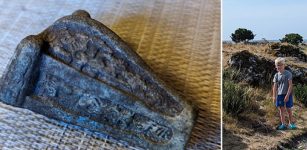 8-Year-Old Boy Finds Unusual Viking Age Artifact On Gotland Island, Sweden
Archaeology | Sep 18, 2023
8-Year-Old Boy Finds Unusual Viking Age Artifact On Gotland Island, Sweden
Archaeology | Sep 18, 2023 -
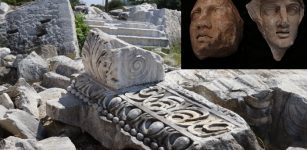 Once Impressive Temple Of Hadrian In City Of Cyzicus Will Be Restored Soon
Archaeology | Sep 7, 2020
Once Impressive Temple Of Hadrian In City Of Cyzicus Will Be Restored Soon
Archaeology | Sep 7, 2020 -
 Fascinating Ancient And Unexplained Mysteries Of Arizona – Secrets Of The Canyons And Mountains – Part 1
Featured Stories | Sep 29, 2024
Fascinating Ancient And Unexplained Mysteries Of Arizona – Secrets Of The Canyons And Mountains – Part 1
Featured Stories | Sep 29, 2024 -
 Mythical Biringan City – Invisible Portal To Another World Where Dangerous Engkantos Reside
Featured Stories | Feb 2, 2018
Mythical Biringan City – Invisible Portal To Another World Where Dangerous Engkantos Reside
Featured Stories | Feb 2, 2018 -
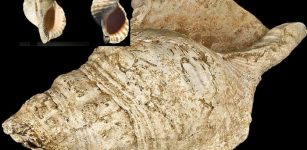 18,000-Year-Old Seashell Was Musical Wind Instrument Used By Magdalenian People
Artifacts | Feb 11, 2021
18,000-Year-Old Seashell Was Musical Wind Instrument Used By Magdalenian People
Artifacts | Feb 11, 2021 -
 Evidence People Lived In Australian Desert 50,000 Years Earlier Than Previously Thought
Archaeology | Sep 22, 2018
Evidence People Lived In Australian Desert 50,000 Years Earlier Than Previously Thought
Archaeology | Sep 22, 2018 -
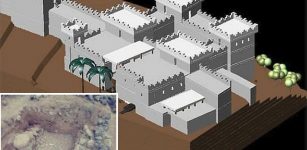 Cursed Biblical City Bethsaida May Have Been Found – But Scientists Argue About The Discovery
Archaeology | Sep 1, 2020
Cursed Biblical City Bethsaida May Have Been Found – But Scientists Argue About The Discovery
Archaeology | Sep 1, 2020 -
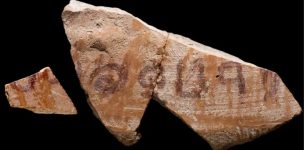 Rare 3,000-Year-Old Jerubbaal Inscription Of Biblical Judge Discovered In Israel
Archaeology | Jul 14, 2021
Rare 3,000-Year-Old Jerubbaal Inscription Of Biblical Judge Discovered In Israel
Archaeology | Jul 14, 2021 -
 Tree Rings On the Oregon Coast Show Evidence A Tsunami That Struck The Pacific Northwest In 1700
Archaeology | Sep 3, 2021
Tree Rings On the Oregon Coast Show Evidence A Tsunami That Struck The Pacific Northwest In 1700
Archaeology | Sep 3, 2021 -
 Yali – Divine Protector And Guardian Of Temples Warding Off Evil Forces In Hindu Mythology
Featured Stories | Nov 7, 2020
Yali – Divine Protector And Guardian Of Temples Warding Off Evil Forces In Hindu Mythology
Featured Stories | Nov 7, 2020 -
 North America’s First Languages Originate From Siberia
Linguistic Discoveries | Apr 10, 2024
North America’s First Languages Originate From Siberia
Linguistic Discoveries | Apr 10, 2024 -
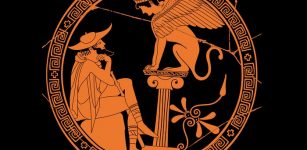 Oedipus – Tragic Prophecy About A Man Who Couldn’t Escape Fate
Featured Stories | Jan 10, 2019
Oedipus – Tragic Prophecy About A Man Who Couldn’t Escape Fate
Featured Stories | Jan 10, 2019 -
 Genghis Khan – Conqueror Of Nations, Ruler Of People
Featured Stories | Feb 12, 2019
Genghis Khan – Conqueror Of Nations, Ruler Of People
Featured Stories | Feb 12, 2019 -
 Denisovan DNA Found In The Genome Of Oldest Human Fossil Discovered In Mongolia
Archaeology | Oct 30, 2020
Denisovan DNA Found In The Genome Of Oldest Human Fossil Discovered In Mongolia
Archaeology | Oct 30, 2020 -
 What Does The Brain Of The Homo Erectus Fossil With The Lowest Cranial Capacity Tell About Evolution?
Archaeology | Mar 2, 2023
What Does The Brain Of The Homo Erectus Fossil With The Lowest Cranial Capacity Tell About Evolution?
Archaeology | Mar 2, 2023 -
 Ancient City Of Urkesh – Home Of Kumarbi – The Foremost Son Of Anu
Featured Stories | Aug 24, 2020
Ancient City Of Urkesh – Home Of Kumarbi – The Foremost Son Of Anu
Featured Stories | Aug 24, 2020 -
 Unexplained Phenomenon Around Yellowstone Puzzles Scientists
Featured Stories | Nov 12, 2018
Unexplained Phenomenon Around Yellowstone Puzzles Scientists
Featured Stories | Nov 12, 2018 -
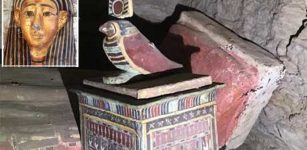 Huge Number Of Intact, Painted Coffins In Shafts Of Egypt’s Saqqara Necropolis
Archaeology | Nov 13, 2020
Huge Number Of Intact, Painted Coffins In Shafts Of Egypt’s Saqqara Necropolis
Archaeology | Nov 13, 2020
